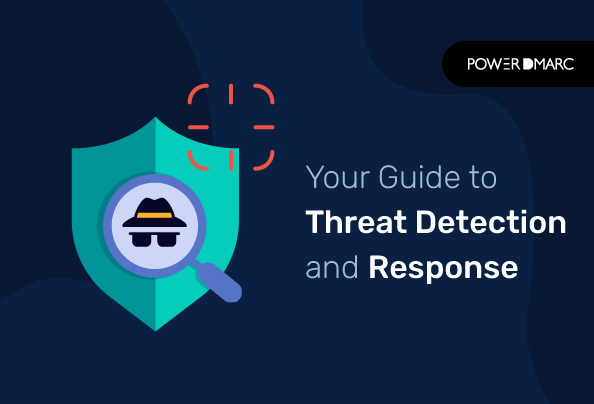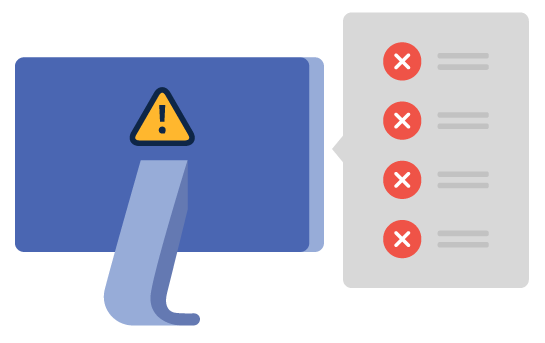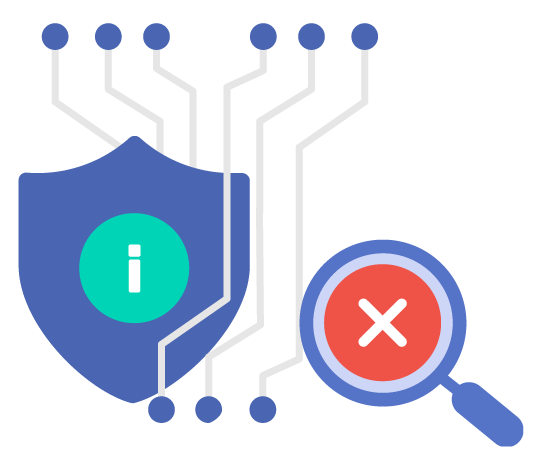Source: securityboulevard.com – Author: Ahona Rudra
Reading Time: 6 min

There is an old saying- prevention is better than cure. This is exactly the aim of threat detection and response or TDR. It’s the process of uncovering threats and fixing or neutralizing them before a cyber actor exploits them to their advantage.
This is practiced at personal, organizational, and government levels to prevent breaches and potential damage. Failure to respond to threats can take a toll on the victim’s reputation and incur financial losses.
What is Threat Detection and Response (TDR)?
Threat detection and response is a popular cybersecurity practice where potential threats and vulnerabilities are identified and reported. TDR helps CISOs and their teams to neutralize network and system compromisation at multiple levels.
An effective threat detection and response strategy for an organization is the combination of cybersecurity experts, technology, and awareness among all employees.
According to IBM’s X-Force Threat Intelligence Index 2024, 70% of cyberattacks targeted critical infrastructure industries in 2023.
The need for this is all the more important now due to dispersed workloads, cloud adoption, and the introduction of AI. These factors contribute to developing legitimate-looking phishing emails, codes, graphics, etc. Sophisticated and targeted attacks, such as APTs, often go undetected by traditional security measures. Threat detection systems are designed to identify advanced threats that may operate stealthily over an extended period of time.
Apart from this, many industries and organizations are subject to regulatory compliance standards that mandate implementing security measures, including TDR, to protect sensitive information.
What Does an Ideal Threat Detection and Response Program Include?

Speed, accuracy, and effectiveness are the three factors that you can’t compromise on while employing a useful TDR program. Apart from these, it should also tick the following boxes-
- The team is aware of who is responsible for each phase of incident response.
- A proper chain of communication has been established.
- The team members know how and when to escalate the problem.
- The roles and responsibilities of all the team members involved should be laid down in an organized manner, including contact details and backups.
- Deployment of event threat detection technology to collect data from networks and logs.
- Deployment of network threat detection technology to monitor and analyze traffic patterns.
- Use of endpoint threat detection technology to report anomalies on user machines and their behaviors.
- Regular conduction of penetration tests and vulnerability assessments to understand detection telemetry and strategize a response.
Threat Detection and Response Strategies
Establishing a practical and effective threat detection system should have some steps laid down. Now, there is no book to go by, but we are sharing a general route of going about it-
Identify All Network and System Assets
The process begins with asset discovery, which means identifying all the resources that are important to you and can be compromised by hackers. The list may include cloud, virtual, and mobile devices, along with on-premises devices and servers. This list gives you an idea of what exactly to protect and how to go about it.
Scan for Vulnerabilities
Vulnerability scanning is the process of uncovering and reporting security loopholes in network and system assets listed in the previous step. This exercise is about detecting anomalies, providing proactive mitigation, and inspecting the attack surface to patch vulnerabilities before a bad actor exploits them.
However, you should also consider its drawback- the scans on the targeted systems can prompt errors and reboots, causing temporary downtime and productivity issues. Nonetheless, you should not refrain from practicing it as the benefits outweigh the drawbacks.
Evaluate and Monitor Network Traffic
To analyze the network traffic, team members and automated tools look for security and operational anomalies to limit the attack surface and manage assets efficiently. The process ideally involves-
- Listing and reporting real-time and historical records of the network’s activities.
- Finding spyware, trojans, viruses, rootkits, etc.
- Fixing network speed.
- Improving internal network visibility and getting rid of blind spots.
Isolate Threat
Threat isolation involves protecting users and endpoints from malware by separating email and browser activities to filter out malicious links and downloads in a remote environment. In the past, organizations often employed various security solutions for protecting against web-based malware.
These solutions ranged from algorithmic analysis of incoming web content to discern its nature to preventing users from accessing websites that could harbor malicious code. Common security products for this purpose include web proxies and secure web gateways.
Set Traps
In the next step of threat detection and response, traps are set using deception technology that fools cybercriminals by distributing decoys across a system to imitate genuine assets. General decoys are a set of domains, databases, directories, servers, software, passwords, breadcrumbs, etc.
So, if a hacker falls for the trap and engages with a decoy, the server logs, monitors, and reports activities to inform the concerned cybersecurity team members.
Activate Threat Hunting
Threat hunters deploy manual and machine-based methods to uncover security threats that may have gone undetected by automated tools. Analysts involved in this know malware types, exploits, and network protocols to proactively explore their networks, endpoints, and security infrastructure to identify previously undetected threats or attackers.
Involvement of AI Automation in Threat Detection and Response

AI automation helps deal with a large volume of data 24/7 without a dip in productivity. Its involvement increases accuracy and makes the process quick. It helps in network traffic, log management, detection of system and user behavioral anomalies, analysis of unstructured data sources, etc.
The evolvement of AI also allows SOC level 1 analysts to perform more high-value tasks as the traditional and fundamental ones can be taken care of by AI tools. The analysts can delve into complicated threats, coordinate incident response endeavors, and build relations with other team members.
Their responsibilities will shift towards overseeing, guiding, and optimizing these autonomous systems, ensuring their alignment with the organization’s entire security strategy.
Threat Detection and Response Tools
Based on the scope of threat detection and the idea of security, security analysts use one or more of these tools and technologies:
-
Cloud Detection and Response (CDR)
CDR solutions are tailored to address the unique challenges of securing data, applications, and infrastructure in cloud platforms. These tools monitor cloud-based activities, identify potential security incidents, and enable timely responses to mitigate risks, ensuring the security and compliance of cloud-based systems.
-
Data Detection and Response (DDR)
DDR deals with data security, privacy, and compliance within an organization’s attack surface. It dynamically secures data by digging beyond static posture and risk analysis while considering content and context to uncover vulnerabilities in real time.
-
Endpoint Detection and Response (EDR)
It protects endpoint devices, including desktops, laptops, mobile devices, internet of Things devices, servers, and workstations. Its key features are incident investigation, isolation and containment, forensic analysis, automated response, and integration with other security tools.
-
Extended Detection and Response (XDR)
You get enhanced capabilities beyond the basic EDR tools to facilitate you with a widespread viewpoint into the attack surface and assets.
-
Identity Threat Detection and Response (ITDR)
ITDR prevents attacks on user identities, permissions, and identity and access management systems by using advanced detection techniques with rapid response strategies.
-
User and Entity Behavior Analytics (UEBA)
UEBA capabilities help understand the typical behavior of users and entities, enabling the detection of anomalous or suspicious activities that may indicate a security threat.
Threat Detection and Response Solutions
Threat detection and response solutions are essential tools for organizations, offering proactive measures against cyber threats lurking within their network infrastructure. These solutions operate by continually scanning and scrutinizing network activities, swiftly identifying potential security breaches or malicious activities.
They employ advanced algorithms and pattern recognition techniques to detect anomalies that may indicate a security threat. Once a potential threat is flagged, these solutions promptly assess the severity and potential impact, enabling organizations to take decisive action.
Expert Insights enlist the following popular solutions for TDR:
- ESET: ESET combines risk assessment, threat investigation, threat remediation and encryption features within their ESET Inspect program. ESET boasts of flexible on-premise as well as cloud-based deployment and API for seamless integration with your existing security systems.
- Heimdal: Heimdal’s Extended Detection and Response (XDR) platform comes with a wide range of powerful threat detection features. It leverages the power of AI/ML to predict anomalies in your network infrastructure and uncover threat patterns.
- Rapid7: Rapid7 Threat Command boasts of an extensive threat library powered by Threat Intelligence technology, with advanced threat investigation, management and monitoring.
- Check Point: Check Point’s Infinity SOC is a proactive threat detection intelligence system that can professionally hunt down and detect abnormalities across networks. What’s even better is that it comes with an alerting mechanism which notifies you on security patches.
Final Thoughts
While threat detection and response technologies are essential components of a robust cybersecurity strategy, they have certain limitations. Some of these limitations include- false positives and negatives, visibility gaps, encryption challenges, compatibility issues, etc. However, there is no doubt that the effectiveness outweighs these shortcomings. And not to overlook the fact that technology is an ever-evolving asset that gets better with time.
Thus, organizations of all sizes, natures, and scopes should invest in TDR analysts, tools, and protocols.
On top of this, staying ahead of email threats are also crucial to ensuring any organization’s domain health and security. PowerDMARC’s cloud-based DMARC analyzer platform is your one-stop solution for securing your emails and domain names. PowerDMARC incorporates threat intelligence and threat mapping technologies in email security to help you detect and take down malicious sending sources impersonating your domain. Get started today by taking a free trial!

*** This is a Security Bloggers Network syndicated blog from PowerDMARC authored by Ahona Rudra. Read the original post at: https://powerdmarc.com/threat-detection-and-response/
Original Post URL: https://securityboulevard.com/2024/04/your-guide-to-threat-detection-and-response/
Category & Tags: Security Bloggers Network,Cybersecurity – Security Bloggers Network,Cybersecurity




















































